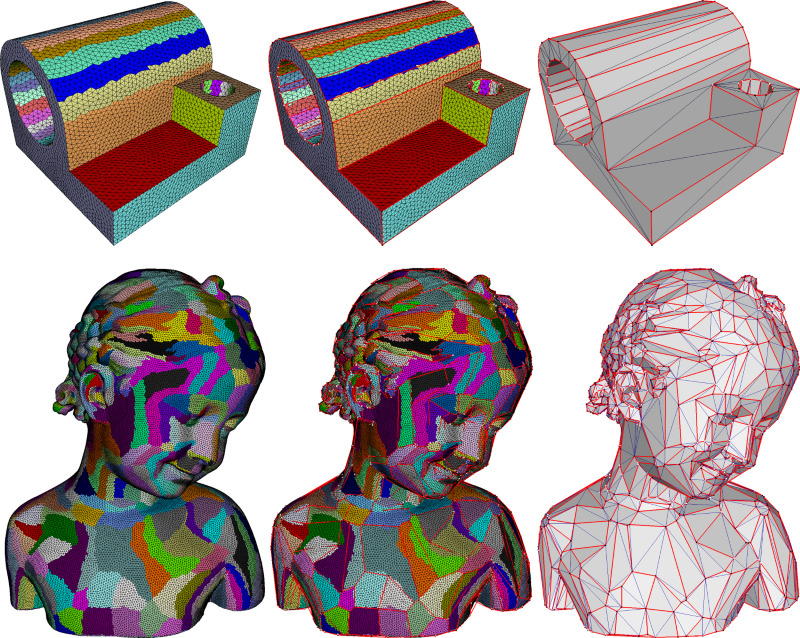由CGAL5.3.1文档的翻译,原文链接 相关文章:
1 介绍
This package implements the Variational Shape Approximation [1] (VSA) method to approximate an input surface mesh by a simpler surface triangle mesh. The input of the algorithm must be:
- Triangulated
- Combinatorially 2-manifold
此软件包实现了Variational Shape Approximation(VSA)方法,通过更简单的表面三角形网格来近似输入的表面网格。算法的输入必须满足:三角化;二维流形。
Given an input surface triangle mesh, VSA leverages a discrete clustering algorithm to approximate it by a set of local simple shapes referred to as proxies. Each cluster is represented as a connected set of triangles of the input mesh, and the output mesh is constructed by generating a surface triangle mesh which approximates the clusters. The approximation error is one-sided, defined between the clusters and their associated proxies. Two error metrics ( L2, L2,1) for planar proxies are provided via the classes CGAL::Surface_mesh_approximation::L2_metric_plane_proxy and CGAL::Surface_mesh_approximation::L21_metric_plane_proxy, and the algorithm design is generic to other user-defined metrics. The current proxies are planes or vectors, however the algorithm design is generic for future extensions to non-planar proxies [4][3]. The default L2,1 metric is recommended in terms of computation and visual perception [1]. A brief background about Proxy and ErrorMetric is provided in Section Background.

Figure 74.1 Variational shape approximation on two models with the
L2,1 error metric and planar proxies. From left to right: partition of the input surface triangle mesh, anchor vertices and edges, and output triangle mesh. The partition is optimized via discrete clustering of the input triangles, so as to minimize the approximation error from the clusters to the planar proxies (not shown).

